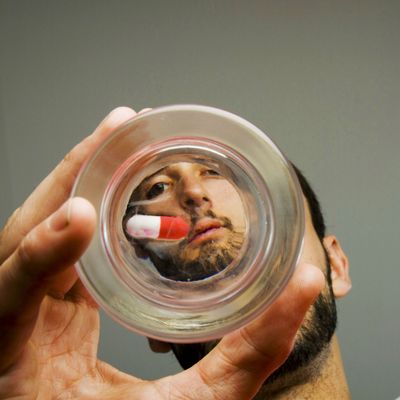
Many people, including us, have lamented why the world still doesn’t havemale birth control. A new Atlantic story looks at the history of the effort including arguments that we don’t have a male pill because pharmaceutical companies don’t think it would make money and a concern that men wouldn’t be trusted to take it. But there is another, much simpler explanation: It’s just a lot harder to make reversible birth control for sperm-wielders.
A quick primer on how the existing options work: birth control pills, patches, rings, and shots use hormones to prevent ovulation in women. No egg, no pregnancy. In some women, hormonal IUDs may also stop the ovaries from releasing an egg, but generally, IUDs and implants thicken cervical mucus to keep sperm from even entering the uterus and possibly making contact with an egg.
Women usually release one egg per month, but men can produce 1,000 sperm per second. The target is a lot bigger.
As David Sokal, M.D., chair and director of the Male Contraception Initiative, told Vice last year:
Unfortunately, there’s a basic physiological difference, and that is that it’s easy to fool the ovaries with a very low dose of hormones to make the ovaries think a woman is pregnant, and so the ovaries will stop ovulation. However, there’s no similar situation for male sperm production; there’s no normal state where sperm production stops.
Using hormones to prevent sperm creation requires really high doses that cause side effects. Since women’s birth control already has side-effect problems and men are fertile for much longer than women are, this wouldn’t be an improvement on current offerings. Plus, men could still impregnate someone for three months after halting new sperm production as that’s how long it takes for existing sperm to get cleared out.
Experts are hopeful about drugs being developed to target sperm’s abilityto swim, but they still have to be reversible. Researchers are working on it, but it’s not an easy feat and getting to the human-trials stage takes time.
What about Vasalgel, that sketchy-sounding injection in the balls? It blocks the release of sperm, but not semen, through the vas deferens, the tube that’s cut during a vasectomy. A second injection with a baking-soda solution flushes out the gel and lets swimmers pass through again, so in this way, it’s like long-acting methods for women. But, crucially, the developers aren’t sure yet how long the sperm-blocking effects will last (a year? maybe longer?). They’re pursuing additional trials.
The moral of the story: male birth control isn’t as easy as we’d like it to be.




